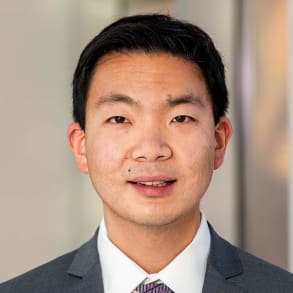Ohio State University Wexner Medical Center therapeutic endoscopist, Samuel Han, MD describes the technique of EUS-guided choledochoduodenostomy in a patient with a malignant biliary obstruction.
thanks. My name is Dr Samuel Han, and I met therapeutic endoscopy at D Ohio State University, Wexner Medical Center. In this video, we describe the technique of endoscopic ultrasound or US guided Khalid. Okay, Edouard in Austin, Me in patients with malignant biliary obstruction where the bio duct, which drains the liver, is blocked by a cancer, most commonly by pancreatic cancer. The standard of care is performing an E R C P, which stands for an endoscopic retrograde Kalandia Pankratov graffiti. This enables placement of a stent which can drain the bio duct and in expert hands, has greater than 95% success rate in certain patients. However, the major papillon, which is where the biotic drains into the do on them, is inaccessible, making Ercp extremely difficult or not at all possible. In the past, per cutaneous transit paddock, biliary drainage, which is performed by interventional radiologist, has been the standard of care and the scenarios by this results in the patient having an external drain that goes through their skin. The recent development of Lumina posing metal stents, which are dumbbell shaped stents, now allow for the creation of a direct connection between the bio ducts and the do on them or stomach. And all of this can be performed and disk optically, which means internally through the mouth, using a flexible and the scope. In regards to the available data. Supporting this technique, there have been two randomized trials comparing US gynecological Watana steamy with standard ercp for patients with malignant biliary obstructions. One study found that 93.8% success rate with the U. S. Got a college okay edouard in Ostuni as well, a significantly lower adverse event rate compared to your CPI. Similarly, the other randomized trial reported a 92.8% success rate, with a 0% adverse event rate. With this technique in this illustrative case, we have a 72 year old male who present to a painless jaundice and elevated liver function tests, including a total Billy Rubin of 34. A C T scan demonstrated a three centimeter mass in the head of the pancreas, which was likely causing biliary obstruction on endoscopic ultrasound was performed first, revealing a large mass in the head of the pancreas, which was sampled using a fine needle biopsy to confirm the diagnosis of the pancreatic adenocarcinoma. Une RCP was then attempted during the same session, which revealed the inaccessible major Papillon that could not be visualized As seen here. The major papilloma was within a large wanna diverticular, which was filled with food. Even after removing the food, the major papillon could not be identified. Therefore, the decision was made in conjunction with the surgical oncology team to perform a U. S guided Colegio Code Watan Ostuni on the U. S. Weakened visualize a large pancreatic en masse to the left of the mess, we see a dilated bio duck that is anti colic or black in color. Measuring the byproduct. We find that it is over 25 millimeters in diameter, which is an ideal size for this procedure. We then prepared the deployment of delusion opposing metal stent. Upon finding a safe window with no intervening blood vessels, the bio doctors first punctured with the stent using Kateri. We then slowly deployed the distal flames of the stent, which creates a characteristic football shape. The proximal end of the stent is deployed under direct visualization with immediate drainage of white bio through the stent. A final double picked up scent is placed into the metal stent to anchor it in place. The cool angiogram confirms correct placement of the stent, with contrast extending into the byproduct. Our final extra image then shows the double picked us and going through the Lumina posing metal stent with large amounts of air entering the byproduct. We thank you for watching this video, and we hope you check back for more videos demonstrating DeRay of advance and disk OPIC procedures offered here at the division of Gastroenterology, Hepatology and Nutrition at D Ohio State University, Wexner Medical Center.
Related Presenters
